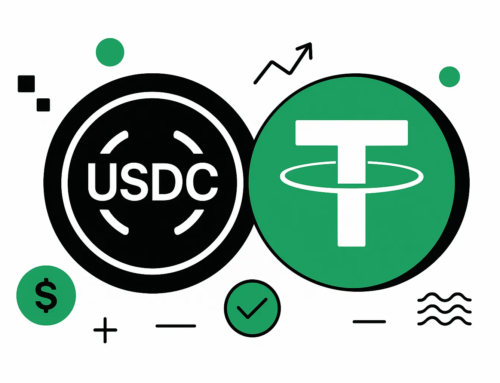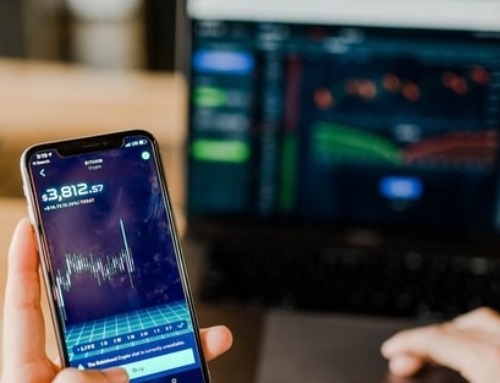Cryptocurrency trading is the speculation on cryptocurrency price movements when buying and selling the underlying digital coin through an exchange. Traders may speculate on the long-term change in price or short-term price movements when staking their funds. That is cryptocurrency trading in a nutshell. In this article, we will dive deeper into this relatively new trading market.
Cryptocurrency Trading Market
The cryptocurrency market is attracting the attention of many investors across the world. High volatility and 24-hour trading set this market apart from the traditional stock markets. However, this market is still relatively new, and most people do not understand clearly how it works. Let us first have a few words about cryptocurrency.
Bitcoin was founded in 2009 as the first digital asset. Since then many altcoins have developed to give the world more alternatives, such as Ethereum, Ripple, Litecoin, Bitcoin Cash, and many more. According to Coinmarketcap, more than 9,000 cryptocurrencies are available for trade. However, new altcoins and less popular ones may have fewer buyers when it is time to sell. Traders prefer convenience; therefore they focus on the leading cryptocurrencies. Bitcoin and Ethereum are the two leading digital cryptocurrencies in terms of market cap and price.
Unlike the traditional stock market, cryptocurrency markets are decentralized – they are not issued or backed by the central authority such as the government. They run across a network of computers using blockchain as the main technology. You can buy and sell digital coins through both centralized and decentralized exchanges and store them in crypto wallets.
Buying and Selling Cryptocurrency on Exchanges
Cryptocurrency exchanges, such as monetum, enable you to purchase digital coins. First, you need to sign up with these exchanges; the procedure may vary between them but they would normally require the upload of your ID and other KYC procedures which are regulated by the AML. You can now go ahead and put up the value of the asset to open a position and keep the crypto in your digital wallet until you decide it’s time to sell.
Currently, cryptocurrencies worth billions of dollars are bought and sold through exchanges every day. Some people make fortunes trading them, others have made cryptocurrency trading a full-time job. However, experienced traders use different trading tools to help them. These tools may include software that helps the traders to analyze the previous pricing trends and automatic trading bots, which improves the traders’ experience.
Notwithstanding, everyone must start somewhere! As long as you are only trading what you can afford to lose, there is no harm in giving out cryptocurrency trading a try. You can choose to go for a short-term trading strategy or a long-term strategy.
Passive trading
Buy and hold: It involves buying a cryptocurrency and holding it for a longer time, normally more than one year, before selling it. “HODL” is a slang used to refer to this type of cryptocurrency trading. The idea behind Holding is that even though there is always volatility, the price should increase in a large amount of the long term. Think of an investor who bought bitcoin in 2011 when the price was at $0.35. If they held it in 2017, they could have sold their coins at $20,000, which is over 57,000-times their initial capital. If they held it in March 2021, they could have sold the coins at over $60,000, which is more than 170,000-times their investment.
Long-term trading is easy and requires a little amount of time. One need not interpret complex trading charts or graphs since you are looking to hold the coin for the long term. Also, you do not need to spend time checking the prices of digital currencies; once you have bought the coins, you only have to wait. Holding does not require lots of money to get started. You can buy small amounts of cryptocurrencies using your spare money and wait for it to grow over time. With Long term trading, you can avoid the stresses of market volatility, since you do not have to worry about short-term price movements.
However, you can easily miss a good opportunity to make quick short-term gains when you opt for holding. Sometimes cryptocurrencies quickly rise in value and then plummet after a few hours or days. A day trader may benefit from such moves, while long-term traders may not notice such moves.
Tokenized Index funds: This is basically the crypto version of the traditional ETF’s and index funds.
Active trading
An active trading strategy involves buying a cryptocurrency with the plan of holding it for a short to medium time, which can be hours, days, weeks, or a few months. By doing this you take advantage of the volatile nature of the cryptocurrency that leads to price shifts within a day. If the price rises, you will sell your digital coins and make a quick profit before the price drops again.
The main advantage of short term trading is that it offers a good opportunity for high percentage gains within a short time, digital currency prices can double overnight! Some common ways of being an active trader are:
Day trading: Time frame to trade is within 24 hours, this has some challenges to consider. It demands extremely fast decision and execution, so it’s not recommended for beginners. The volatile nature of cryptocurrency prices is a double-edged sword: While it can earn you quick profits, if you win, it can also drain your funds within a short time, if you lose. The frequently shifting prices of crypto also mean you will need to spend a lot of time analyzing the market. Short-term trading also requires emotional discipline. Losing your trades may create a rabbit hole where you keep staking your funds and losing. In such a situation, you must be emotionally disciplined enough to break the cycle and accept that you do not always win, and probably take a deep breath and avoid impulsive decisions. Additionally, Day traders need to have quite good analysis skills since they are looking for small gains in small price movements. They must be able to read trading charts and graphs which might take a little while to learn if you are a beginner.
Swing Trading: It tries to catch the “swing” across a short to medium time frame, usually a week. You can swing highs (peaks) or lows (dips). In order to apply this strategy you need to follow daily and weekly market trends and also have a deep look at the available information about the asset.
Trend Trading: Holding positions for a few months assuming that the crypto will continue to move in the same direction, no matter if at some points it gets lower, trend traders will look at a bigger picture in the medium term and most probably put a stop loss on their asset if they don’t trust their guts enough.
Scalping: It’s a way of making small and frequent profits, it is relatively used within daytrade and you need to stay focused and make exhaustive technical analysis and be constantly checking candlestick graphs displaying the currency price for every minute. Some experts go with 100 trades on a single day, needless to say, this kind of practice is for highly experienced traders.
Day Trading or Hodling?
Neither day trading nor Holding, or both of them, it all depends on your goals, motivations, and circumstances. What is favorable for one person may not be right for another person.
However, as a beginner, you have to be extra careful when dealing with day trading, which is why choosing holding your asset will be less risky for you. You can choose to hold 70% of your total cryptocurrency trading funds in a long-term investment and day trade with 30%. Even if you lose in your day trading, you can count on the long-term investment to back you up, and even earn you a fortune. Long-term trading is a ‘safe’ bet. And remember not to spend over your capital, we all need money to live in our real life, so don’t spend your food, house and tax money in making trading with crypto, as you will need to have a clear head and make decisions without pressure on the exchange.








